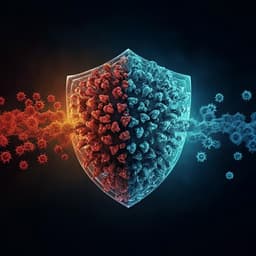
Medicine and Health
Neurological complications after first dose of COVID-19 vaccines and SARS-CoV-2 infection
M. Patone, L. Handunnetthi, et al.
Explore the intriguing findings of a recent study by leading researchers indicating that while COVID-19 vaccines are linked to increased neurological complications, the risks are significantly higher following actual SARS-CoV-2 infection. This important research sheds light on Guillain-Barré syndrome, Bell's palsy, and stroke, raising essential questions for public health and safety.
~3 min • Beginner • English
Related Publications
Explore these studies to deepen your understanding of the subject.







